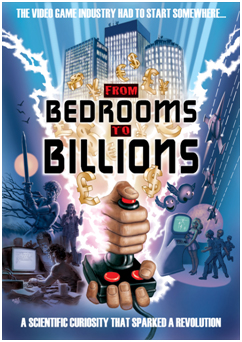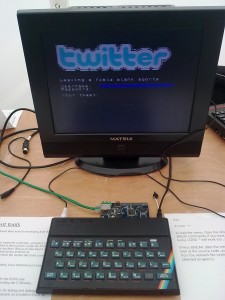I blame Top Gear. I could have bypassed the many years of frustration, expense and disappointment that comes with a serious racing game habit were it not for a Christmas special.
It was 1997, I was 15, and it is fair to say that I was obsessed with cars – hailing from a small rural village in Nowheresville, the need to escape the dull monotony of daily life in the noisiest, fastest and most vulgar way possible was strong.
Top Gear was a whole different beast to the one on our screens today – it actually featured car reviews (who’d a thunk it?) – and covered various other motoring issues. In this particular episode, they were reviewing Christmas gifts – and shimmering through it all was TOCA Touring Car Championship.
It was a revelation; here were car models in a computer game that actually looked like their real-life counterpart, racing around real tracks, with all the real names. It was also voiced by Tiff Needell, which I found more exciting than I really should have.
Quite frankly, it had me right there and then. I needed that game more than I needed Anna Friel’s telephone number, which is quite a statement considering my utter, uhm, devotion to the dulcet-toned northerner…
So I set about saving for the Playstation. It wasn’t the first console in my house, as there was the Commodore 64 that lurked in the ceiling. It was only ever brought out on rare occasions, as my parents didn’t want it to rot my brain – their words. To give you some sort of picture of the realities of that, they wouldn’t let me watch Children’s ITV after school, as it was somehow inferior to the BBC – go figure. The only games I’d played on the C64 were Wacky Waiters and a rather peculiar game called The Count. This was a text-based instructional game where the simple task was to get said chap out of bed and into a hallway. However, he was so recalcitrant and unable to understand basic instructions (such as pull back sheet) that the whole experience left me with the overriding feeling that the title of the game contained one more vowel than was truly accurate.
So, TOCA Touring Cars. The game was based on the 1997 British Touring Car Championship, a series based on cars your mum and dad drove and populated by distinguished British gentlemen racers and international motor racing superstars, and even the odd Formula One refugee – who all liked crashing into each other on a regular basis. This series was huge during this era – huge grids, massive manufacturer involvement and, in 1997, there was the first live TV broadcast. It really was universally popular, compared to today. Nowadays, professing a love for all things automotive is about as trendy and socially acceptable as saying you’re into Nazi-themed llama porn.
So, having wrangled the cash for the console and game combo, what was the game like? Well – awesome is the word. Flying into the first bend fighting off the attentions of a digitised Alain Menu and John Cleland was truly wonderful, a golden moment of my adolescence – a bit like when I managed to record Anna Friel in Stephen Poliakoff’s The Tribe… but, erm, less said about that the better.
But why did TOCA become to signify the existential angst of being a teenager? Well, in championship mode, it was a full simulation of the real championship. This meant qualifying and two 20-lap races, and car handling that was about as forgiving as your mother when she’s discovered you’ve bunked off school just to watch The Tribe… again.
Twenty laps. Just think about that. Sure, in most games you can set your races to however many laps you want these days. But in 1997, this was the law. Twenty laps. Twenty laps to consider life, the universe and everything – and where to hide the videotape with The Tribe on it. Nowadays most races in these games last a mere three to five laps.
Round and round you go, knowing that any mistake would mean the physics model would fling you off into a virtual part of middle England, with pixel-based grass particles and the rapidly disappearing rumps of your automotive competitors to remind you of your folly. Yes, this was the time of my GCSEs, where the future was in my hands – well, when I wasn’t watching The Tribe. Ahem.
Fail your GCSEs and you were doomed to a life of picking vegetables in a field in deepest darkest Fenland, with only the prospect of the above-average per capita drug addiction possibilities for the area to cushion the gloomy outlook. Keep up the circulations, keep up the laptimes, keep up the consistency, keep up with the pack – on and on it went, forever more and ever onwards. As you plunged through the twisting circuits, you’d spear off when you’d got to the front – just when you thought you’d got a handle on things, you’d be dredging yourself free from a gravel trap, only to start again.
I started to see my toils in the game coming true in my teenage world; things that seemed so simple and free in the mind (enjoying playing a computer game) suddenly became a very serious fight for survival that involved much in the way of barging (punting off other cars in the game), being knocked out of the game (always by John bloody Cleland in his sodding Vauxhall Vectra – he even managed to spangle my race by taking me out, upside down, at Brands Hatch when I was leading) and generally let down by happenstance and bad luck (random kerbs from hell pitching you into an advertising hoarding at a considerable rate of knots).
Take one painful reminder of youth, here displayed in a mid-championship scenario. You’re at Thruxton, the fastest circuit on the calendar (holding hands with girl), in the fog (very confused), leading by 10 seconds (stroking her thigh), in some degree of pain due to your thumbs being in the same position for 30 minutes (in some degree of pain due to your thumbs being in the same position for 30 minutes), 19 laps in (ready for what those signs at the swimming baths call ‘heavy petting’ – which I always thought sounded like something involving a Newfoundland), when who should be there as a backmarker, appearing out of the misty gloom like an automotive version of Death in The Seventh Seal, in the braking zone for the last corner, but John Cleland again, in his Vectra of doom, to launch you into an unrecoverable spin that left you staring, teary eyed, into oncoming traffic (her mum turning up with a friend who subsequently became her boyfriend) and destined to finish last – again.
The game really did reflect the ups and downs of teenage life; Silverstone in the rain meant the four-wheel-drive Audi A4s had the advantage, but with some judicious corner cutting you could at least keep up with them in your Mondeo (yes, I cheated on my French coursework when I could barely say more than eight words of the language), whereas at Snetterton you were miles ahead of everyone else but a bit lonely doing it (watching The Tribe. Again. Ahem).
That’s not to say you didn’t have moments of good fortune and elation; occasionally the AI would pole-axe themselves, leaving you free and clear to win. Sometimes you could see the beauty of the early attempt at lens flare glinting across the end of your bonnet as you and car became one with each other in some kind fluid, symbiotic combination. Other times you’d hit every wall twice. Pretty much like life then… All the time you’d be looking for guidance from the booming, overlord-esque voice of Tiff, but how that guidance worked to your racing toils you were never quite sure. You did start to think that the game (or was it life?) was conspiring against you, as any teenager will no doubt attest.
So there you have it – if you want to desperately relive how it feels to be a teenage boy, play the championship mode on TOCA Touring Car Championship. Relive the pain, frustration and repetitive monotony, and the ultimate disappointment when all you have is Tiff Needell giving you an audible pat on the back during a badly rendered championship winning sequence. Come to think of it, I might have got better GCSE results if that was going to happen in real life…
Now, where did I leave that videotape?




